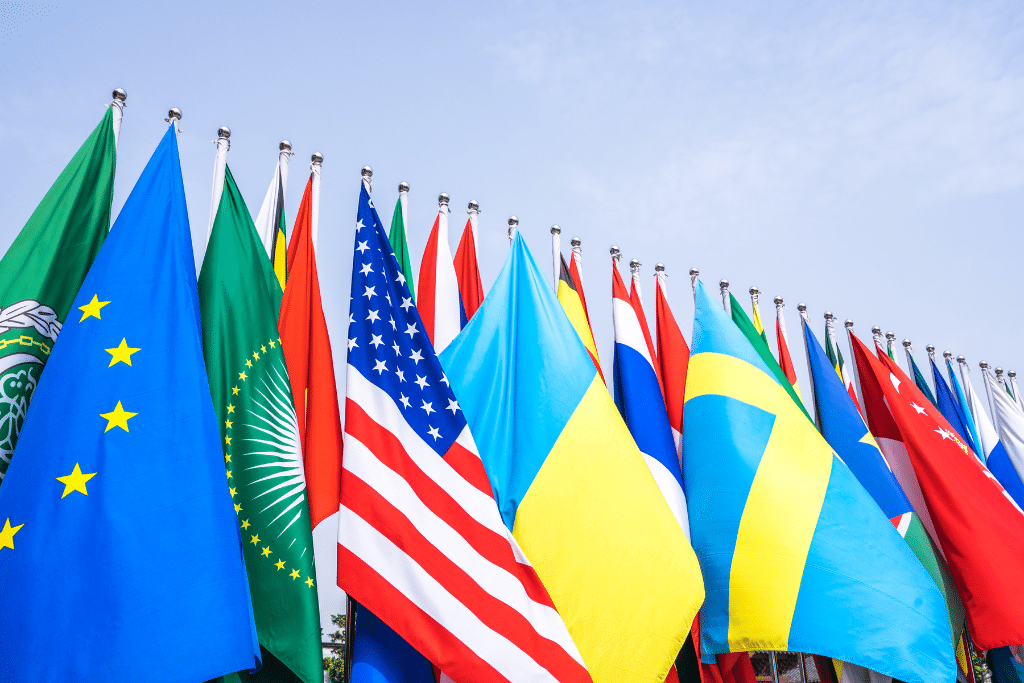On June 22, 2023, world leaders and financial experts from more than 40 countries gathered in Paris for the Summit for a New Global Financing Pact. French President Emmanuel Macron hosted the Summit to gather international personnel in search of financial solutions to global problems of poverty and climate change. From a US$100 billion dollar promise to heavy taxes, the summit generated numerous discussion points that have caught the public’s attention. In this piece, we explore five key takeaways from the summit.
—
1. Easier Access to Cash
At the heart of the Summit for a New Global Financing Pact that was held in Paris last month was a debate over how to alleviate the burden of heavy debts from extreme climate crises shouldered by developing countries. The Bridgetown Initiative, a list of suggestions for the creation of new instruments and reform of existing institutions to finance climate resilience, and the Sustainable Development Goals (SDGs) compiled by these nations, were the focal point for addressing the issue.
These developing countries are bearing the brunt of climate change, facing hefty expenses to cover the damages caused by extreme weather events and other related phenomena. The Bridgetown Initiative brings the inaccessible liquidity to light, prompting global leaders from developed countries to organise suitable financial aid.
At the summit, nations agreed that US$100 billion shall be provided to developing countries through International Monetary Fund’s (IMF) Special Drawing Rights, an international reserve asset. The fund shall be available to all IMF members and allocated according to the sizes of their economies. However, this is not to be confused with the long-overdue pledge of giving US$100 billion to poor countries annually for financial support.
During the discussion at the summit, France, Japan, and the UK were some of the countries that announced their allocations to developing countries, pledging about US$80 billion in total. If the White House receives the green light from Congress, the US will commit another US$21 billion.
International institutions’ contributions are key assets at summits such as the one in Paris last week. The Summit for a New Global Financing Pact concluded that richer countries might need to financially support multilateral development institutions, with a plan to invest more of their current assets to collect US$200 billion over the next decade. Meanwhile, member nations agreed that multilateral institutions should use at least US$100 billion a year in private sector capital when lending money.
2. The Forgotten Promise of $100 Billion
Speaking of US$100 billion, the digits could ring a bell to some avid climate news followers, as they echo the long-dismissed promise made during the 15th Conference of Parties (COP15) in Copenhagen in 2009.
In the 2009 conference, developed countries pledged to allocate US$100 billion to developing countries every year by 2020 to mitigate the climate crises. However, only at COP21 in Paris in 2015 was the goal restated and extended to 2025. Eventually, every following United Nations climate summit has been subjected to scrutiny due to the failure to deliver on the promise. According to the latest Organisation for Economic Co-operation and Development (OECD) finding, a total of US$83 billion of the $100 billion pledged had been raised as of 2020.
Much to people’s surprise, French President and host Emmanuel Macron addressed the elephant in the room during the two-day finance summit, expressing that he is “confident” the pledge will finally be accomplished this year, building up the anticipation for this year’s discussions at the COP28 climate conference set to take place this November in Dubai.
3. Emergency Toolkit
The abrupt and extensive economic damage incurred during the Covid-19 pandemic has acted as a brutal reminder of the importance of immediate action during global crises like pandemics and climate change. With the drastic changes brought about by a rapidly changing climate, attendees of last week’s summit also discussed establishing emergency toolkits to minimise the probability and damages of another global life-threatening event.
The soon-to-be president of the World Bank, Ajay Banga, who attended the meeting, outlined his goals for the institution. He believes that alleviating poverty has to be a sustained goal of the World Bank, along with alleviating the climate crisis. Only when an international institution simultaneously tackles aggravating issues can developing countries break free from the vicious cycle of collecting debts to fix climate problems.
“My view is the World Bank’s vision has to evolve to say, yes, we will create a world free of poverty, but on a liveable planet, meaning we tackle climate, pandemics, fragility, food insecurity, things that reduce our ability to have quality of life, and to have hope and optimism,” Banga said.
Among the measures discussed was also a plan to establish advanced warning systems for extreme weather. Thus, authorities can have better preparations before disasters erupt, saving lives and costs.
The discussion also navigated through new types of disaster insurance, which are exemplified in Jamaica. In July 2021, the World Bank set up a catastrophe bond of up to US$185 million that aided Jamaica through tropical cyclone events that wreaked havoc across the region. Leaders at the summit also talked about offering debt repayment pauses to countries affected by extensive climate disasters.
4. Brief Debt Relief
At least 52 countries shoulder immense debts as a result of climate change and are almost entirely unable to cover their debts, a problem that is further exacerbated by increasing interest rates.
The World Bank has subsequently announced that it will pause debt repayments for countries experiencing extreme climate conditions, but only for new loans. The UK pledged to go a step further and allow pauses for existing loans, but only for 12 listed countries in Africa and the Caribbean.
Another highlight of the debt relief discussion was Zambia’s debt crisis. In 2020, the country sustained a mounting debt during the pandemic. The debt was multiplied by high interest rates, which limited the government’s investments in infrastructure development for economic expansion. Last week, the US and China finally reached an agreement with debtor Zambia to reconstruct the loan of US$6.3 billion by extending the deadline to over 20 years, with US$4 billion owed to China.
Restructuring this debt can allow Zambia to gain financial stability and growth, paving the way for more stable debt repayments.
5. New International Taxes
All of the aforementioned goals cannot be achieved without proper funding, where Macron suggested collecting money through “new avenues for international taxation”, including shipping, aviation, and even financial transactions.
“Help us find all the countries which today have no tax on financial transactions and which today have no tax on plane tickets. Help us to mobilise at the International Maritime Organization in July so that there is international taxation,” Macron told French broadcast journalists.
Next week, the International Maritime Organization is set to discuss the potential implementation of a new, global tax on shipping. Macron stated there is accumulating support for shipping tax, with 22 countries in favor. Nonetheless, the amount of support garnered is still a far cry from the required support from the 170-member organisation.
The shipping industry has lagged behind others in minimising its environmental pollution. Failing to limit its carbon emissions more than six years ago, the industry now takes up 3% of global greenhouse gas emissions and the number could skyrocket if not tackled properly.
At the summit, US treasury secretary Janet Yellen said that the Biden administration will consider introducing a shipping tax, though no further details have been provided.
Critiques and Conclusion
While the Summit for a New Global Financing Pact is praised for having a reliable and precise framework for tackling global poverty and climate change, there is still much room for critique and improvement.
Before the summit came to a close, global representatives agreed that the main principle of the proposed financial aid is that there will be trillions of dollars, and most of it would have to come from the private sector.
“While the roadmap from the Paris Summit acknowledges the urgency for substantial financial resources to bolster climate action, it leans too heavily on private investments and ascribes an outsized role to multilateral development banks,” said Harjeet Singh, head of global political strategy at Climate Action Network International.
On the other hand, some protesters insist that the summit had turned a blind eye to the crux of the climate crisis – fossil fuels.
Prominent climate activists Greta Thunberg and Vanessa Nakate believe that developed countries should eliminate fossil fuels and fund the global transition to more sustainable sources. The summit, however, failed to properly address this.
Now that the Paris climate finance summit has ended, many onlookers are waiting for upcoming climate events, including the COP28 meeting in Dubai later this year, the International Monetary Fund and World Bank meeting, and the G20 summit in September.
You might also like: Did COP27 Succeed or Fail?














